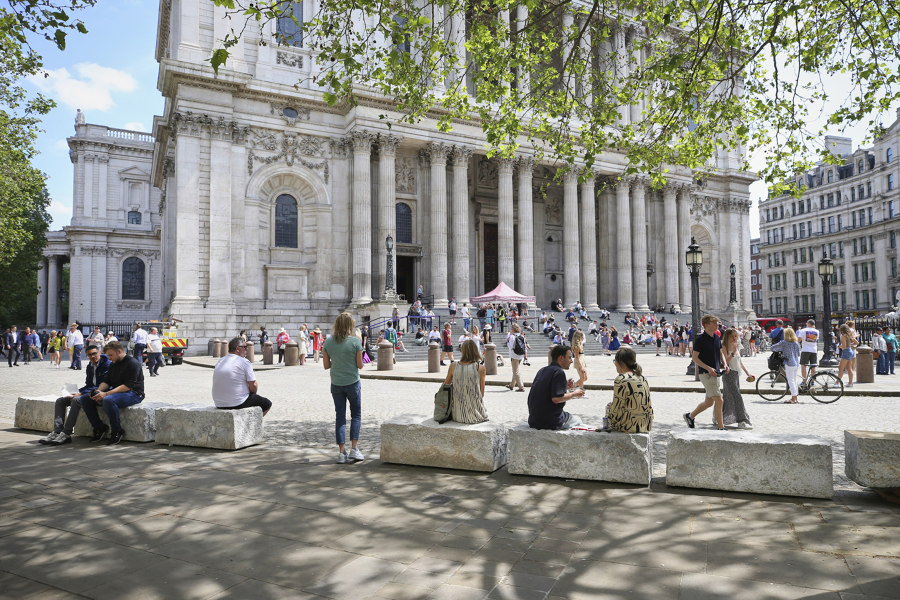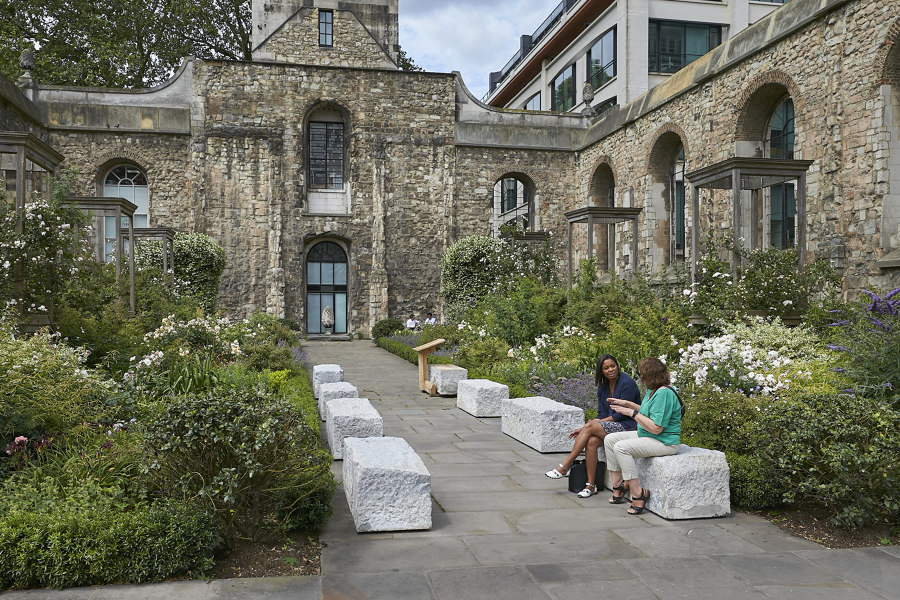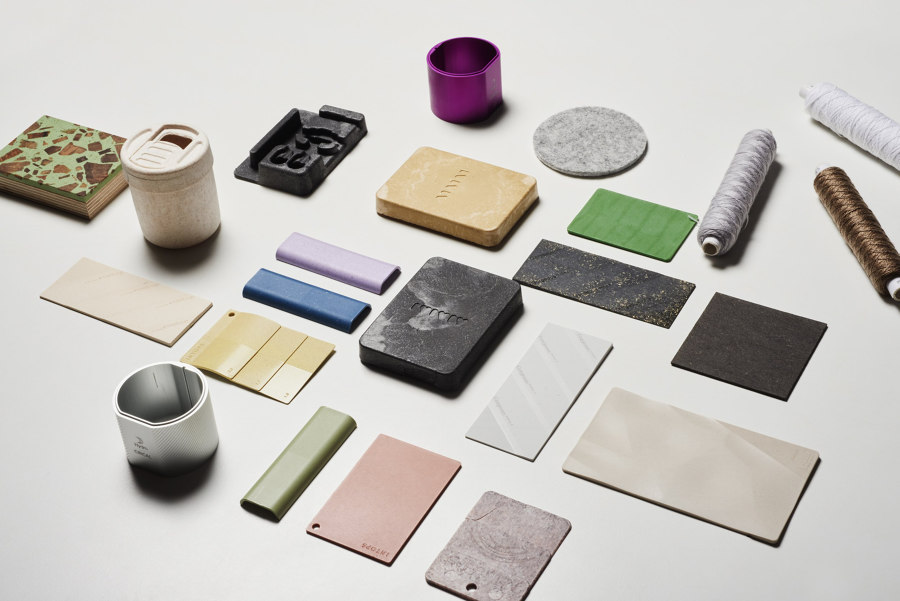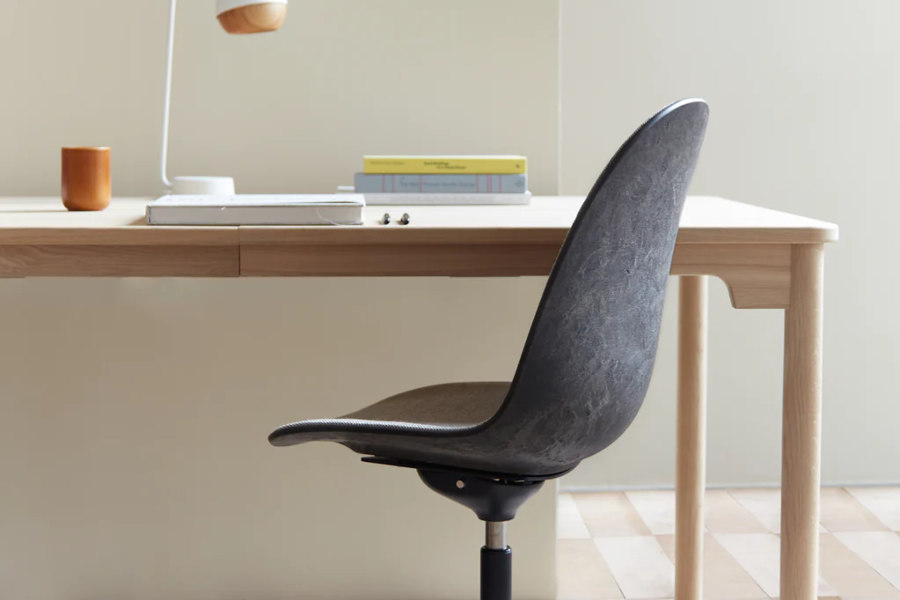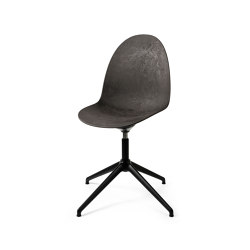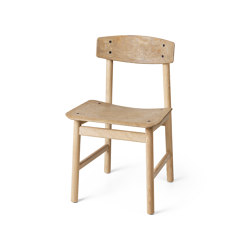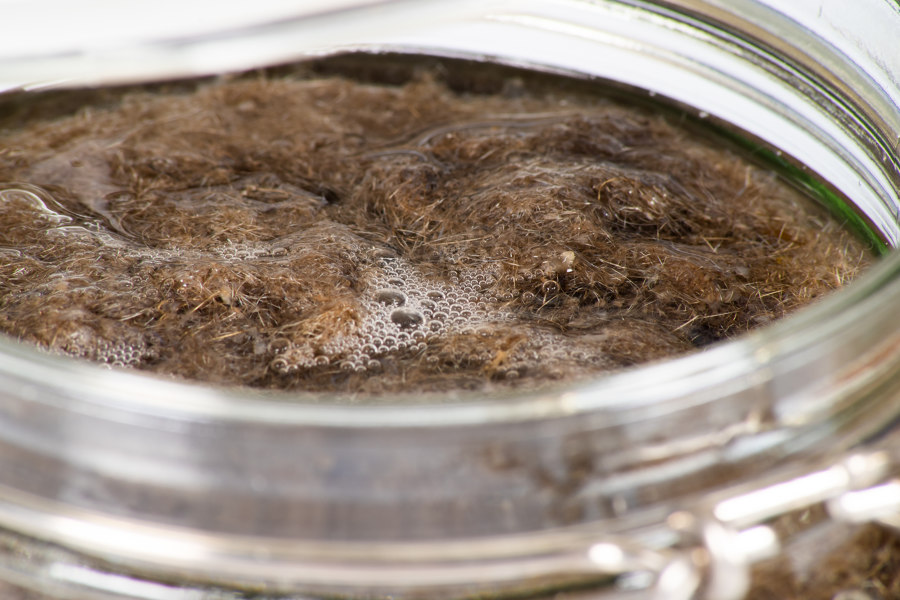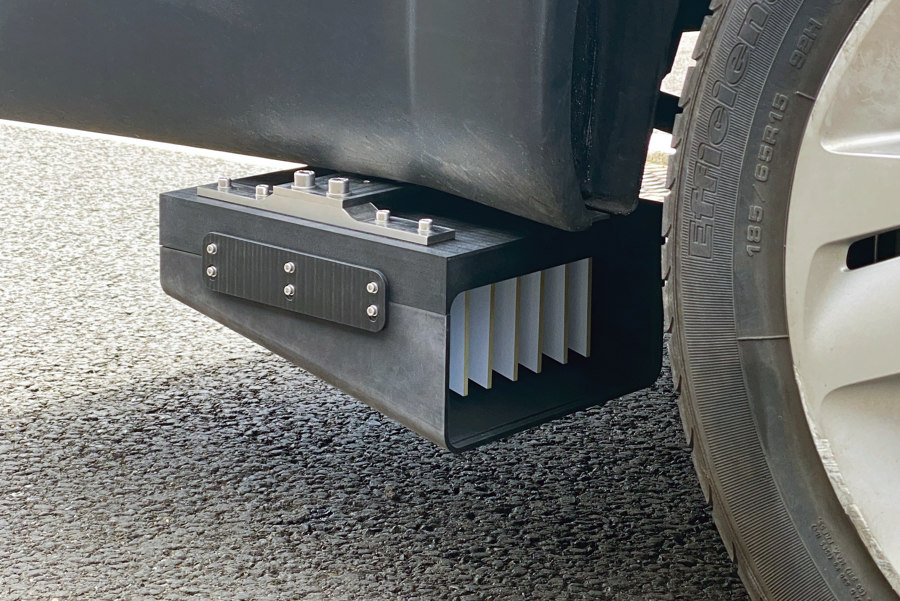London Design Festival 2023 predicts the future of sustainable materials
Text von James Wormald
09.10.23
At the London Design Fair, Material Matters and other exhibitions and installations across the city, designers, architects, engineers and other change makers reveal their latest work on sustainable materials.
Lights made from lab-grown mycelium were amongst some of the alternative products using bio-materials at the London Design Fair during London Design Festival. Photo: London Design Fair

Lights made from lab-grown mycelium were amongst some of the alternative products using bio-materials at the London Design Fair during London Design Festival. Photo: London Design Fair
×Sustainability and circularity in the design world are gradually changing from zeitgeist trends into the fundamentals of modern manufacturing. The race is on to develop planet-friendly materials of high enough quality to replace carbon-intensive ones, as well as the systems to ensure they’re accessible for all, whilst consumers wait impatiently at the finish line. Some of the world’s foremost design brands joined material researchers and community-led creatives to share findings in sustainable materials during the London Design Festival 2023.
Thames to Eternity granite blocks at St. Paul’s Cathedral (top) and Christchurch Greyfriars Church (middle), and Coldharbour Light’s hen-picked pendant (bottom). Photos: Clive Totman (top, middle), Coldharbour Lights (bottom)
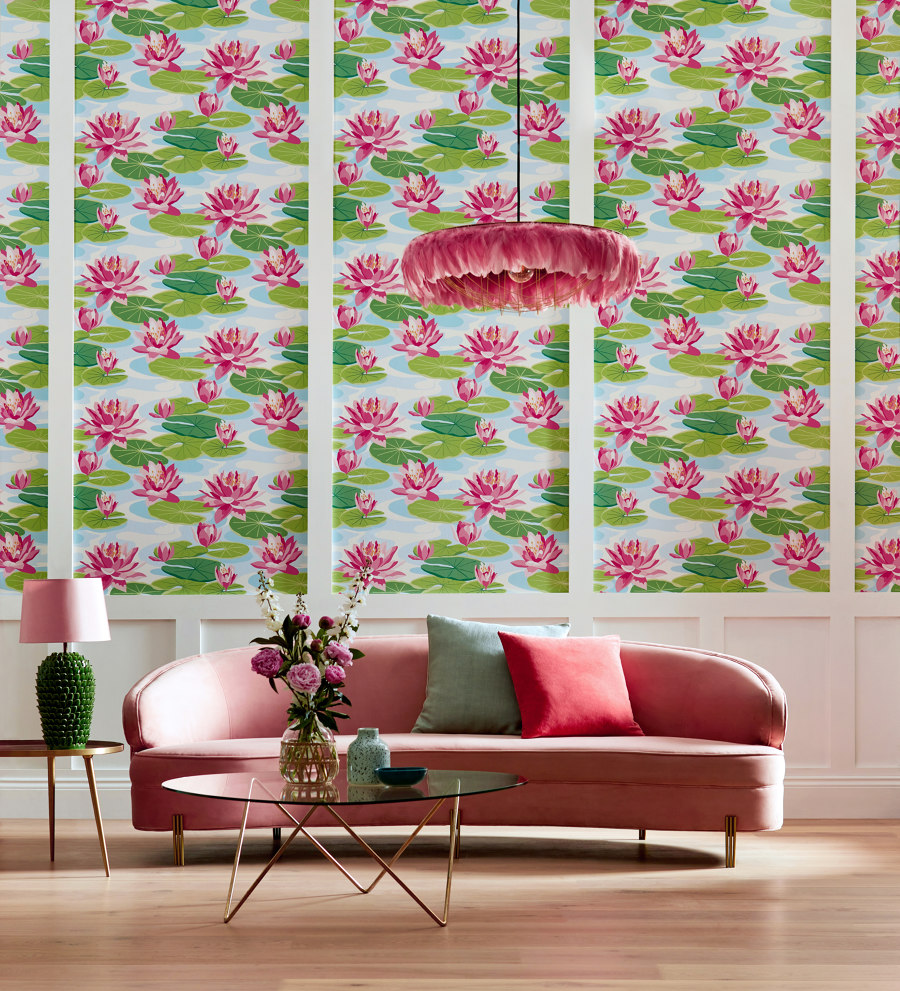
Thames to Eternity granite blocks at St. Paul’s Cathedral (top) and Christchurch Greyfriars Church (middle), and Coldharbour Light’s hen-picked pendant (bottom). Photos: Clive Totman (top, middle), Coldharbour Lights (bottom)
×Reusing natural materials we already have
It takes a lot of energy and effort to recycle usable but unwanted materials into other forms. By instead repurposing the same objects, the difficult recycling process can be avoided. When the Thames Tideway Tunnel project removed around 60 tonnes of granite from the Victoria Embankment, for example, the city decided to reuse the stones to form a new public space. By scattering the stones around the local area first, the From Thames to Eternity project showcased the versatility of natural materials. Meanwhile, one of the best examples of re-use at the London Design Fair, was local lighting design studio Coldharbour Lights’ collection of lighting pendants made with ‘carefully bleached and hand-dyed feathers’, explains the studio. All second-life feathers used are ‘by-products of farmed poultry or common game birds’ such as hens, geese and cockerels.
Sustainable material examples from Chris Lefteri Design’s Materials: Ingredients for Sustainability installation (top) and the marbled gomi speaker made from recycled plastic (middle, bottom). Photos: Chris Lefteri Design (top), gomi (middle, bottom)
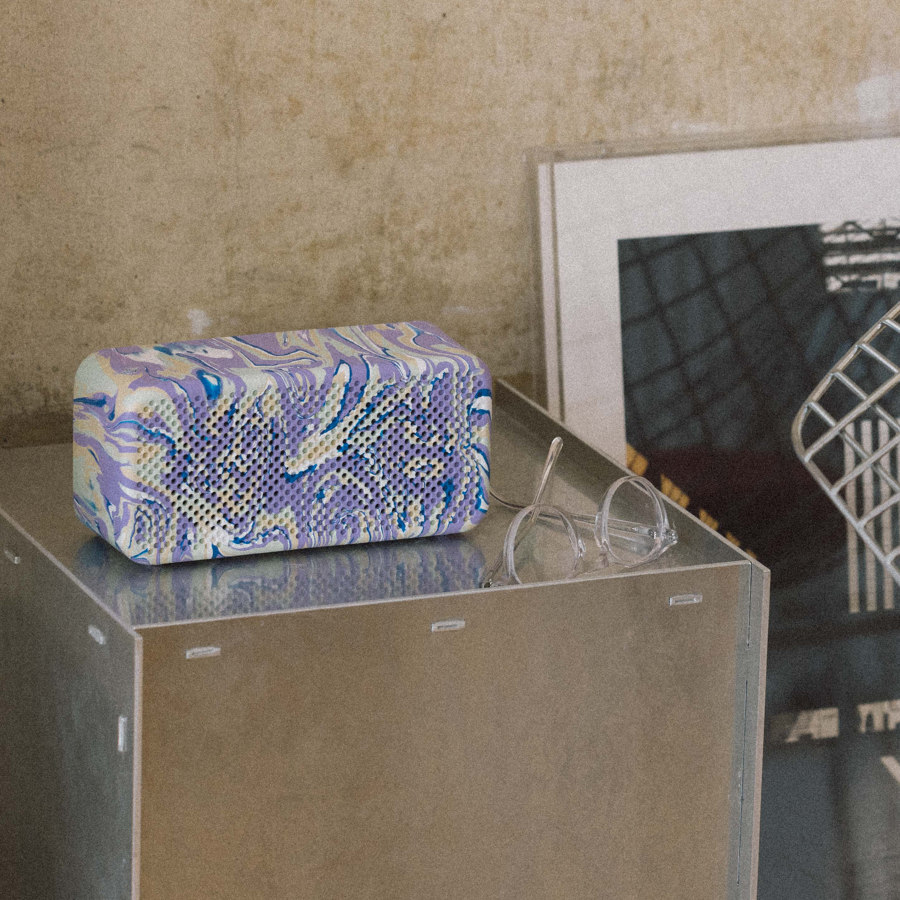
Sustainable material examples from Chris Lefteri Design’s Materials: Ingredients for Sustainability installation (top) and the marbled gomi speaker made from recycled plastic (middle, bottom). Photos: Chris Lefteri Design (top), gomi (middle, bottom)
×The broken recycling cycle
One of the most interesting and hopeful stands at the London Design Fair in London’s Truman Brewery venue, was material research studio Chris Lefteri Design’s ‘Materials: Ingredients for Sustainability’ installation, grouping various innovative materials by their production processes and presenting examples of the finished product for inspection. The section of ‘recycled’ material referred to both post-industrial and post-consumer waste, ‘within well-managed waste streams.’ As the recycling collective Are You Mad explained to me at their Soho home, however, waste streams are often far from well managed.
With the cost of recycling commercial waste too expensive for many small UK businesses to take on, many choose simply to send their recyclable plastic to general waste instead, sentencing them to incineration. As a response, homegrown groups such as Are You Mad take waste plastics from local businesses and, with the help of designers such as gomi, form them into bespoke products like speakers with a unique marbling effect.
Spark and Bell’s Recycled Plastics wall lamp (top) and Mater’s Eternity chair and Conscious chair (middle, bottom), made from recycled plastic and coffee waste and post-consumer waste, respectively. Photos: Spark and Bell (top) and Mater (middle, bottom)
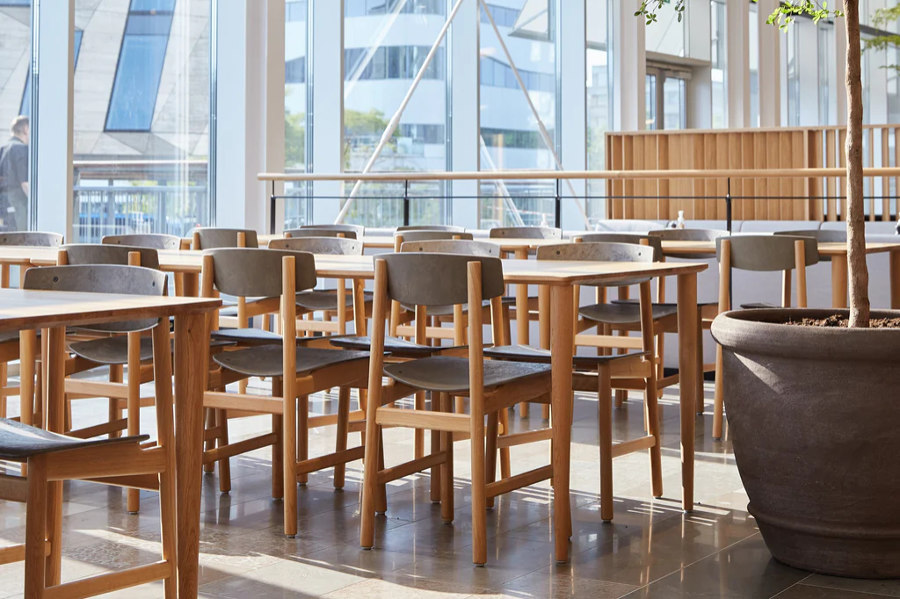
Spark and Bell’s Recycled Plastics wall lamp (top) and Mater’s Eternity chair and Conscious chair (middle, bottom), made from recycled plastic and coffee waste and post-consumer waste, respectively. Photos: Spark and Bell (top) and Mater (middle, bottom)
×The ‘look’ of recycled materials
With all the positivity – not to mention the evident necessity – surrounding the sustainability movement, products and packaging made with recycled materials are in the midst of a honeymoon period where they’re able to obtain value from the process itself, and in the tell-tale patterning and texture of recycled materials. Although on-trend now, the look of recycled plastic materials – often likened to terrazzo – needs to innovate and diversify to provide the long-term aesthetic solutions that sustainable manufacturing requires.
The look of recycled plastic materials needs to innovate to provide long-term aesthetic solutions
In their Recycled Plastics collection, for example, revealed at London Design Fair, one such brand looking to combine the material’s past with the high quality of more natural materials like marble, is Spark and Bell. By ‘tinkering, tweaking and perfecting various concepts and methods of recycling soft plastic waste,’ explains the brand, they are able to produce sleek, contemporary lights in what seem to be classic marble patterns and colours.
Elsewhere, at the Material Matters showcase at London’s Bargehouse gallery, furniture brand Mater showcased their Eternity and Conscious chairs, made to resemble natural stone by combining plastic and coffee waste, and design studio Pearson Lloyd shared their 25-year history researching and developing circular design including mono-material upholstery and plastics for products like the Edge Free sofa for Modus and the SixE chair for HOWE with the same strength, durability and luxury feel as ever.
The Briiv air filter (top) with bio-plastic base made from elephant grass and fibre insulation (bottom) made from mussel beards (middle) by Seastex. Photos: FIVE Create (top), Seastex (bottom)
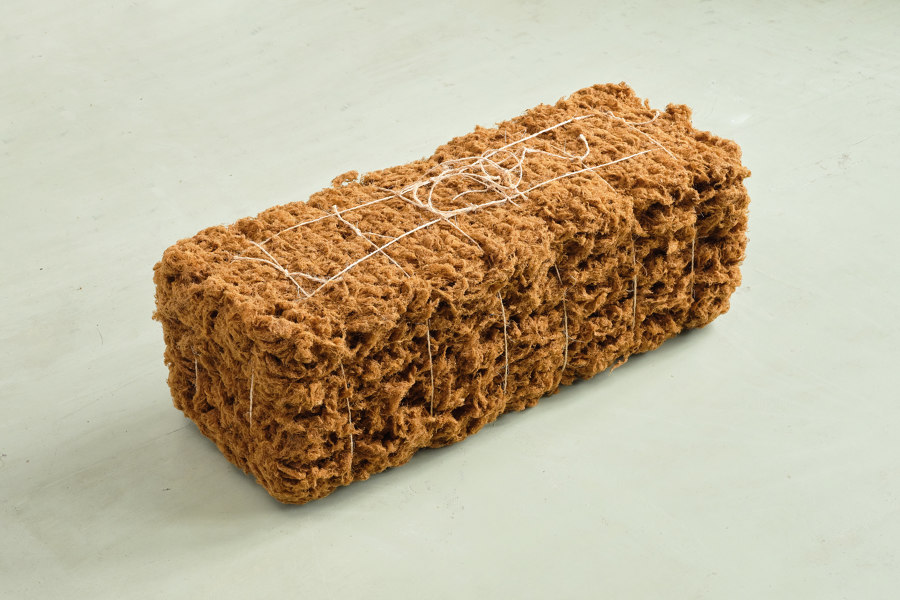
The Briiv air filter (top) with bio-plastic base made from elephant grass and fibre insulation (bottom) made from mussel beards (middle) by Seastex. Photos: FIVE Create (top), Seastex (bottom)
×Bio-plastics causing the extinction of petrochemical plastic
Instead of replacing virgin petro plastics with recycled versions of themselves, and using energy and resources to do so, bio-engineers are busy developing many other types of plastic from more natural sources, some of which actually have a net-positive-carbon impact. For example, FIVE Create’s Briiv air filter, showcased at the London Design Fair, filters air of pollutants such as VOCs and fine particulates, but the product’s bio-plastic base is also made from carbon-capturing elephant grass.
Another carbon-positive product showcased as part of the London Design Fair’s Sustainable Materials Showcase, meanwhile, was the textile fibres harnessed from mussel beards (byssus) by Seastex. A by-product of the mussel-farming industry, the mussel beard has long been researched by bio-engineers for its adhesive qualities, but in removing the methane emitting byssus from the ecosystem during the farming, Seastex is able to ‘permanently capture mussel waste emissions while creating valuable construction materials such as insulation.
The Tyre Collective’s integrated device to collect tyre wear (top) and tyre particles ready to be recycled and repurposed (bottom). Photos: The Tyre Collective
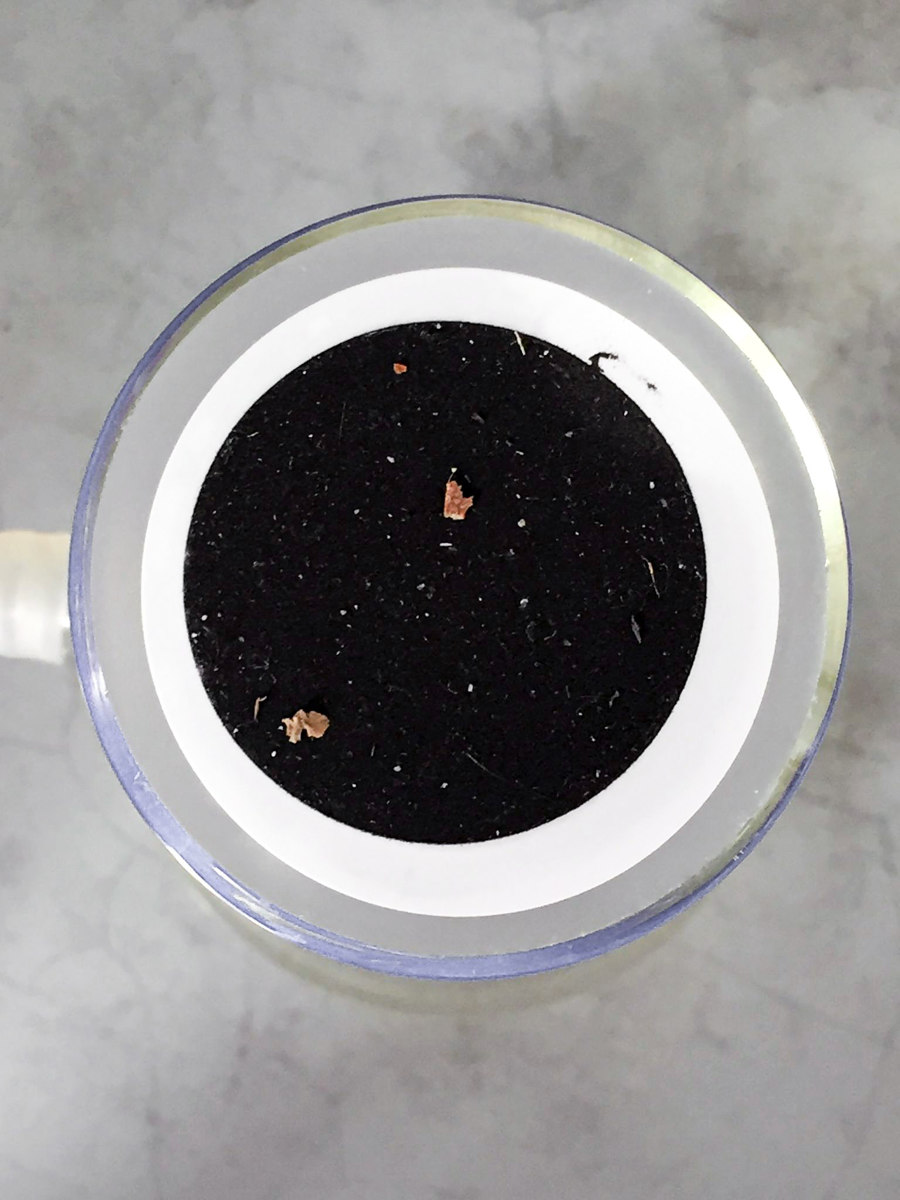
The Tyre Collective’s integrated device to collect tyre wear (top) and tyre particles ready to be recycled and repurposed (bottom). Photos: The Tyre Collective
×Looking forward to solve future problems
Finally, environmental problems aren’t just those we face today. Exhibiting at Material Matters, The Tyre Collective shocked visitors with an alternative truth about electric vehicles. Whilst the environmental aspect of EV-use over petrol vehicles was not questioned, the Collective looked ahead to what the increased use of heavier vehicles will do to overall tyre wear and pollution. In response to the issue, the studio has prototyped a device that manufacturers can place behind tyres to collect worn rubber, and also developed a variety of products, from jewellery to batteries and pressure sensors, that either upcycle or recycle the material.
© Architonic
Head to the Architonic Magazine for more insights on the latest products, trends and practices in architecture and design.

